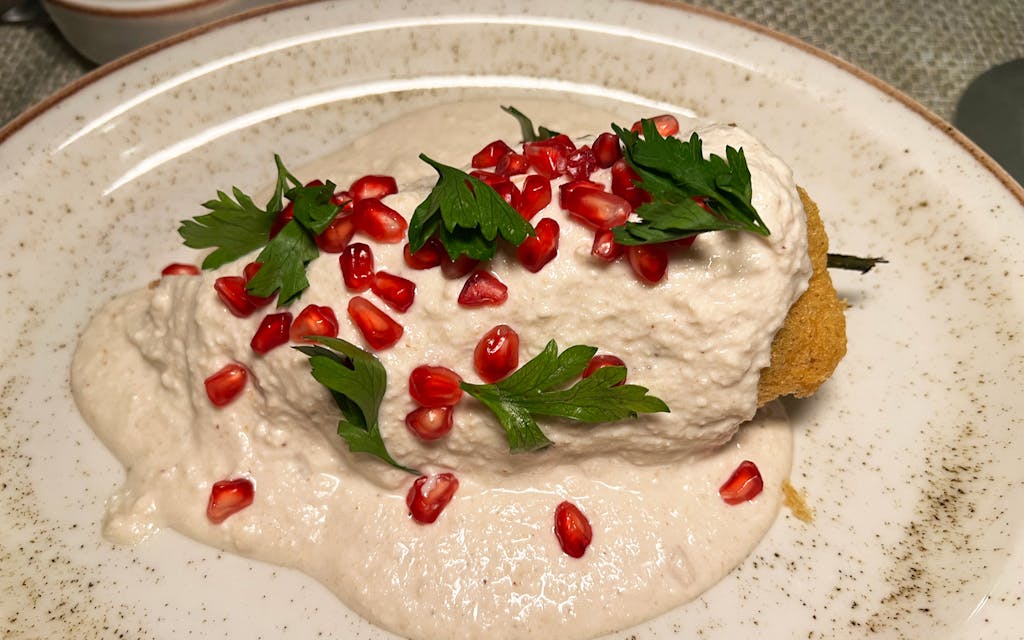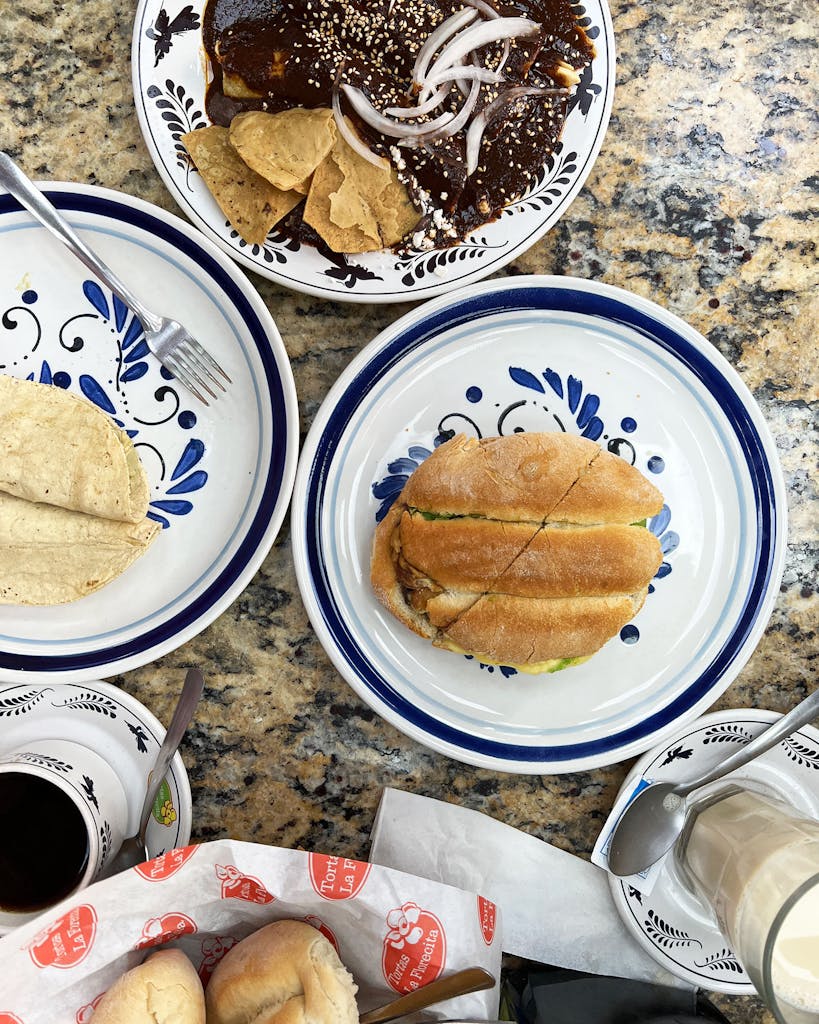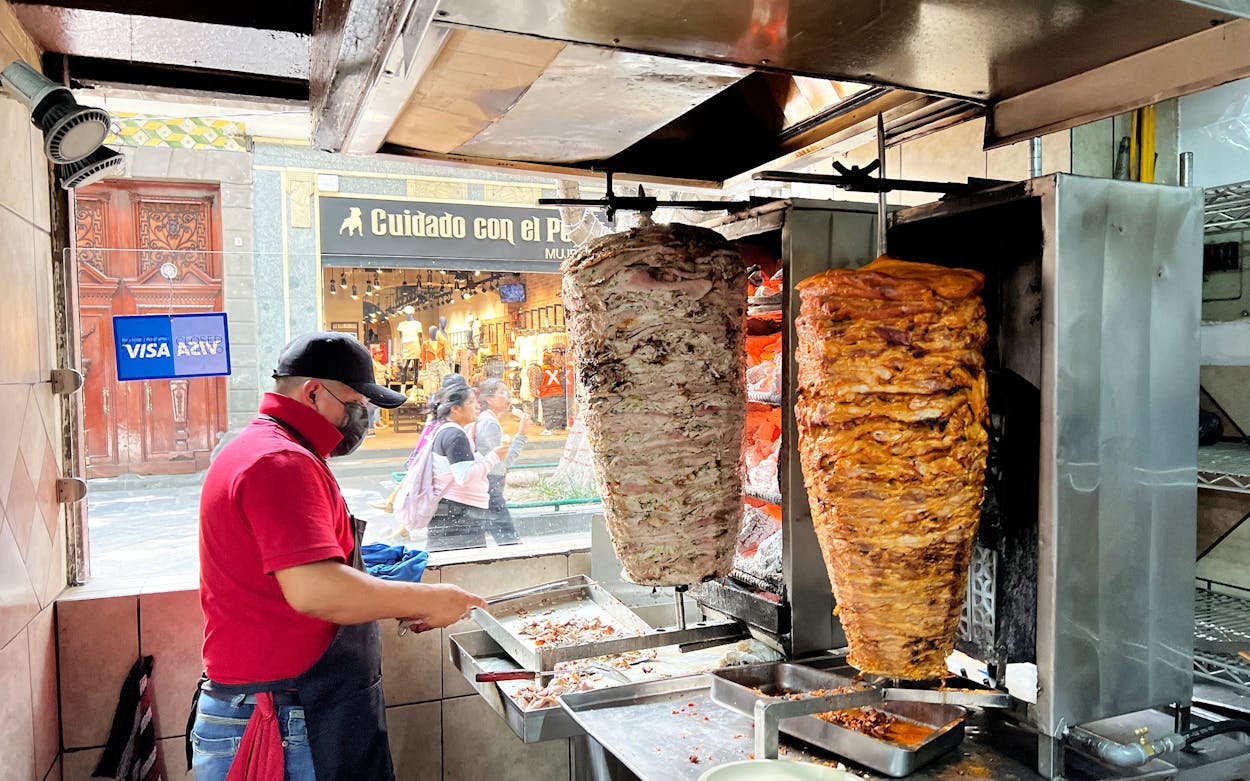Something has always gone awry during my recent trips to central and southern Mexico. Two hours into a June trip to Oaxaca, my wife sliced her head open. After a couple hours, she was stitched up and ready for the remainder of our five-day adventure. By the end of my first night in Puebla in late August, my big toe was bleeding for unknown reasons. My hotel came through with bandages, iodine solution, and cotton. While I limped during most of my nearly week-long trip, I was free to soak up the knowledge of the city and the surrounding area.
I traveled with the two friends I usually travel with when visiting Mexico. The first is cook and author Nick Zukin, who has been visiting Mexico for more than twenty years and is working on a book about barbacoa with Tacopedia author Alejandro Escalante. The second is Francisco “Paco” de Santiago, a former bullfighter and Mexico City–based gastronomic and cultural tour guide for Culinary Backstreets.
The pair picked me up from the Mexico City international airport and we headed for Puebla, about two hours southeast. To our left was the city of Neza; behind us, concealed by clouds, was perhaps the most famous of Mexico’s active volcanoes, Popocatépetl. As we left the cosmopolitan environs of Mexico City, tall buildings and highway businesses were replaced by towering hillsides with mountains in the background.
I reveled in the natural beauty, but I had one thing in mind: food. Particularly chile en nogada (a seasonal dish celebrating Mexican Independence) and iconic Poblano foods such as tacos árabes (shawarma-inspired trompo tacos) and cemitas (sandwiches on a slightly crusty roll). I wasn’t disappointed, and you won’t either with this guide of restaurants and dishes. But the time to visit Puebla is now, especially if you want to enjoy a chile en nogada.
Antigua Taqueria la Oriental
Considered the originator of tacos árabes, this local institution is noticeable from the street by the cylinder of brown pork fired by charcoal behind the window. Antigua Taqueria la Oriental, founded in 1933, is brightly lit with TVs broadcasting soccer—but the tacos are the main attraction. Thinly sliced and coated in earthy spices, the pork is wrapped in pan árabe, a pockmarked flatbread that is part pita and part flour tortilla. Thick, smoky salsa chipotle and dense, yogurt-like jocoque cream accompany the tacos. Multiple locations.


Antojitos Mary at the Mercado Acocota
Maria Ximello and her sons, Saul and Uziel Ximello, serve local specialties at their puesto in Puebla’s Mercado la Acocota. Maria took on the responsibility of running the booth from her mother, and built a jovial environment with exquisite food in a small corner of the market. My friends and I had a lunch of chunky lamb shank barbacoa in guasmole de zancarrón, a heavy broth made with guajes, small pea-like pods. We also tried corn tortillas smothered in mole poblano, and a folded Puebla-style gordita, a large toasted tortilla filled with black bean puree and topped with red salsa, chopped onions, and cheese. This differs from the typical gordita preparation, which is a stuffed masa disc. Finally, we wrapped up our meal with raspaduras tacos, which featured fried shaved beef cooked with onions, chiles, and the sarsaparilla-like herb epazote. Calle 16 Norte 605, La Acocota, Puebla.
El Mural de los Poblanos
I first met Martin Hernandez, executive chef at El Mural de los Poblanos, during a trip to Berlin for a taco conference earlier this year. At the event, the tall, thin, and jubilant Hernandez prepared two trompos for tacos árabes, and sold out quickly on the first night. Back in his hometown, Hernandez oversees an upscale but relaxed two-story restaurant in Puebla’s Centro. For dinner, we enjoyed a mole tasting, for which we were given bibs. The lineup included pipian verde (a green, pumpkin seed–based mole with a kick of spice—and a personal favorite), a fresh almond mole, and an inky manchamanteles (literally, “tablecloth stainer”). Then we splurged on chile en nogada. The most patriotic of dishes is in season until Mexican Independence Day on September 16. Almond slivers, candied fruit, and chopped pork and beef are stuffed in a poblano chile that’s battered and fried, then blanketed with a white walnut sauce and topped with a speckling of pomegranate seeds. It’s an ethereal experience worth the trip. Calle 16 de Septiembre 506, Centro, Puebla, 52-222-242-0503.
El Sultan
Along a pedestrian street in the city’s historic center, this Puebla institution specializes in tacos árabes. It was unfortunate to see the taquero pre-shaving meat from the vertical spit. Thankfully, we were told we could ask for meat directly from the trompo. That small issue aside, I was happy to have more tacos árabes to stuff my face with. Victoria del 5 de Mayo 2–Local C, Centro Histórico de Puebla, Puebla, 52-222-232-6632.

Salón Mezcalli
Stalls dot the streets of Puebla, but there are also full-service restaurants. Salón Mezcalli is one of the more highfalutin establishments. Along the callejón de los sapos (“alley of the frogs”), lit by stringed bulbs and tucked into the Cartesiano Boutique and Wellness Hotel, the restaurant serves upscale Poblano specialities in a space with white walls, abstract art, and a tree sprouting from the center of the front room. My dinner companions and I ran through several courses, including an amuse bouche of elotes in block form; bantam chalupas, some with mole; and two kinds of cemitas, Puebla’s iconic sandwich. The first cemita had pickled cow’s feet, stringy quesillo (often mistakenly called queso Oaxaca or Oaxacan cheese), the fragrant herb papalo, creamy avocados, and soft potatoes, with pickled veggies, chiles, and chipotles in their own sauce for toppings. The second was the same, but we subbed cow’s feet for pork milanesa. But the best part of the dinner was the chile en nogada. Calle 3 Oriente 610, Centro, Puebla, 52-222-564-8873.

Tortas la Florecita
Breakfast in Mexico isn’t like the morning meal we enjoy in the States, although there are some similarities. Tacos, for example, are plentiful, though they are of the guisado variety. One morning in Puebla, we dug into a taco of chicken in pipian verde at Torta la Florecita. We also munched on perfectly balanced, shirt-staining mole enchiladas, and one of the titular sandwiches filled with a cheese-stuffed chile poblano. It was salty and fruity in flavor and squishy in texture. Calle 3 Sur 104, Centro Histórico de Puebla, 52-222-246-6051.
- More About:
- Tacos
- Sandwiches
- Mexico








